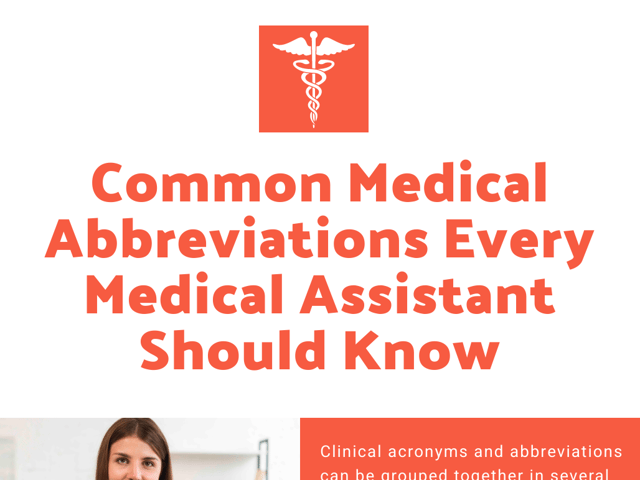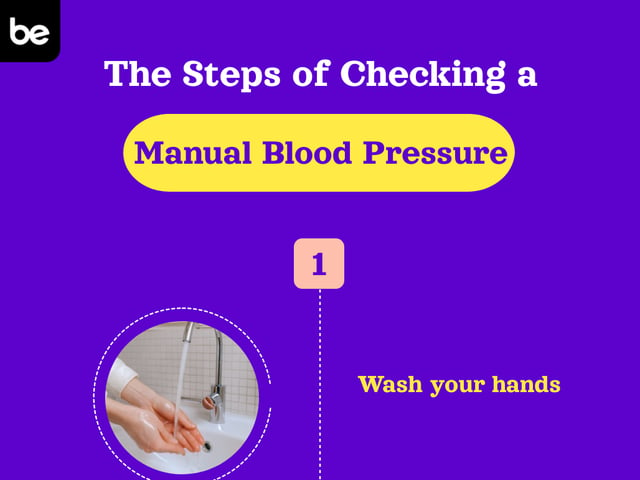
Common Medical Abbreviations Every Medical Assistant Should Know
Why is Knowing Medical Abbreviations Important?
Medical assistants, as the backbone of clinical support, have diverse roles that demand both precision and efficiency. Their interactions span across patients, doctors, other healthcare professionals, and administrative staff. A clear and concise mode of communication, therefore, is paramount.
Enhancing Clinical Efficiency
Medical abbreviations are essential for medical assistants when documenting patient histories, writing out medical orders, or interpreting them. Their ubiquity in the healthcare world ensures that patient-related information can be quickly noted and understood, expediting patient care. For instance, noting “HTN” instead of “hypertension” in a patient’s medical record can save time, especially when these abbreviations need to be used multiple times.
Precision in Administrative Tasks
The administrative side of a medical assistant’s role includes tasks like billing, insurance claims, and scheduling. Here, abbreviations related to procedures, diagnoses, or even insurance-related terms can simplify complex information. For example, understanding that “OPD” stands for “outpatient department” can be crucial when scheduling patient appointments or processing claims.
Facilitating Effective Communication
Given the multi-disciplinary nature of healthcare, medical assistants must communicate with a range of professionals, from physicians to pharmacists to radiologists. Using standardized abbreviations ensures that there’s a common language, minimizing misunderstandings. For instance, if a doctor prescribes a medication to be taken “q8h,” both the medical assistant and the pharmacist understand that the medication should be taken every 8 hours.
Patient Safety and Advocacy
The most significant reason for knowing medical abbreviations is to ensure patient safety. Misinterpretations can lead to errors in patient care, such as incorrect medication dosages or miscommunication about a patient’s history. When a medical assistant is proficient in medical abbreviations, they act as a safety net, catching potential errors and advocating for the patient’s best care.
Navigating the Nuances of Medical Abbreviations
While abbreviations serve as a significant time-saving tool, this convenience comes the responsibility to interpret and employ them accurately. Even a seemingly minor oversight can lead to substantial miscommunication and potential medical errors. Here are some pivotal aspects to remember:
The Significance of Letter Case
Medical abbreviations often differentiate meanings based on the use of uppercase and lowercase letters. For example, two acronyms might appear similar but can convey entirely distinct interpretations based on their capitalization. A slight change in the case can alter the meaning of an abbreviation dramatically, emphasizing the importance of meticulous attention to detail.
Contextual Clarity in Abbreviations
In some instances, identical letter combinations might signify two completely different medical terms. Here, the context becomes a crucial factor in determining the correct meaning. Always consider the surrounding information, the specific medical scenario, or the patient’s condition when decoding abbreviations. This contextual clarity ensures that the correct interpretation is made, safeguarding against potential misunderstandings.
Continuous Learning and Adaptation
The world of medicine is ever-evolving, with new research, techniques, and terminologies emerging regularly. As a result, some abbreviations might undergo changes or acquire additional meanings. It’s imperative for medical assistants to stay updated and periodically refresh their knowledge.
Common Medical Abbreviations Chart
Below is a concise reference chart detailing frequently used medical abbreviations. Use this as a quick go-to guide when encountering these terms in your daily tasks.
| Abbreviation | Full Form |
|---|---|
| ABG | arterial blood gas |
| ACL | anterior cruciate ligament |
| AD | pertaining to the right ear |
| ADHD | attention deficit hyperactivity disorder |
| A.Fib | atrial fibrillation |
| ALS | amyotrophic lateral sclerosis |
| AMA | against medical advice |
| A/P | anterior-posterior |
| AROM | active range of motion |
| AS | pertaining to the left ear |
| AU | pertaining to both ears |
| A&O | alert and oriented |
| BID | twice a day |
| BLBS | bilateral breath sounds |
| bm | bowel movement or bone marrow |
| BMR | basal metabolism rate |
| BP | blood pressure |
| BR | bed rest |
| bs | bowel sounds or breath sounds |
| B/S | bedside |
| bx | biopsy |
| C | Celsius |
| C1, C2, etc. | first cervical vertebrae, second, etc. |
| CA | cardiac arrest |
| CABG | coronary artery bypass graft |
| CAD | coronary artery disease |
| cal | calorie |
| cath | catheter |
| CBC | complete blood count |
| cc | cubic centimeter |
| CCU | coronary care unit |
| CHF | congestive heart failure |
| CHI | closed head injury |
| CNA | certified nursing assistant |
| CNS | central nervous system |
| c/o | complains of |
| COPD | chronic obstructive pulmonary disease |
| CP | chest pain |
| CPAP | continuous positive airway pressure |
| CPE | complete physical exam |
| CPR | cardiopulmonary resuscitation |
| CRF | chronic renal failure |
| CSF | cerebrospinal fluid |
| CT | computerized tomography |
| CV | cardiovascular |
| CXR | chest X-ray |
| DC | discharge or discontinue |
| DNR | do not resuscitate |
| DOA | dead on arrival |
| DOB | date of birth |
| d/t | due to |
| Dx | diagnosis |
| ECC/EKG | electrocardiogram |
| ED | emergency department |
| EEG | electroencephalogram |
| EENT | eye, ear, nose, throat |
| EMG | electromyogram |
| ENT | ear, nose, throat |
| ER | emergency room |
| F | Fahrenheit |
| FH | family history |
| fib | fibrillation |
| fl/fld | fluid |
| f/u | follow-up |
| FWB | full weight bearing |
| Fx | fracture |
| GB | gallbladder |
| GCS | Glasgow Coma Scale |
| GERD | gastroesophageal reflux disease |
| gen | general |
| gest | gestation |
| GI | gastrointestinal |
| gluc | glucose |
| GP | general practitioner |
| GSW | gunshot wound |
| GTT | glucose tolerance test |
| GYN | gynecology |
| Hb. | hemoglobin |
| HB | heart block |
| HBP | high blood pressure |
| h.d. | at bedtime |
| H2O | water |
| H&H | hemoglobin and hematocrit |
| h/o | history of |
| H&P | history and physical |
| HR | heart rate |
| HTN | hypertension |
| HVD | hypertensive vascular disease |
| Hx | history |
| ICCU | intensive coronary care unit |
| ICP | intracranial pressure |
| ICU | intensive care unit |
| Int | internal |
| IM | intramuscular |
| I&O | intake and output |
| IV | intravenous |
| JP | Jackson-Pratt drain |
| jt | joint |
| K | potassium |
| KUB | kidney, ureters, bladder |
| L | left, liver, liter, lower, lumbar |
| L1, L2, L3 | first lower lumbar vertebrae, etc. |
| lab | laboratory |
| lac | laceration |
| lat | lateral |
| LE | lower extremities |
| LL | left lateral |
| LMP | last menstrual period |
| LOC | loss of consciousness, level of consciousness |
| LOS | length of stay |
| LP | lumbar puncture |
| Lx | larynx |
| m | married, male, murmur, mass |
| MCA | middle cerebral artery |
| MD | muscular dystrophy |
| med. | medicine |
| mets. | metastasis |
| MG | myasthenia gravis |
| MI | myocardial infarction |
| MICU | medical intensive care unit |
| MRI | magnetic resonance imaging |
| MRSA | methicillin-resistant Staphylococcus aureus |
| MVA | motor vehicle accident |
| Na | sodium |
| NAD | no abnormality detected, no apparent distress |
| NC | nasal cannula |
| NG | nasogastric |
| NICU | neonatal intensive care unit |
| NKA/NKDA | non-known drug allergies |
| NOS | not otherwise specified |
| NPO | nothing by mouth |
| NSA | no specific abnormality |
| NST | non-stress test |
| N&V | nausea and vomiting |
| NVD | nausea, vomiting, and diarrhea |
| NYD | not yet diagnosed |
| O | oral |
| O2 | oxygen |
| O2 sat | oxygen saturation |
| OA | osteoarthritis |
| OD | right eye |
| O/E | on exam |
| OR | operating room |
| OS | left eye or mouth |
| OTC | over-the-counter |
| OTO | otolaryngology |
| OU | both eyes |
| PA | physician’s assistant |
| PACU | post-anesthesia care unit |
| PAF | paroxysmal atrial fibrillation |
| PAL | peripheral arterial line |
| Path | pathology |
| PCA | patient controlled analgesia |
| PE | physical exam |
| PED | pediatrics |
| PET | positron emission tomography |
| PH | past history |
| PI | present illness, pulmonary insufficiency |
| PICC | peripherally inserted central catheter |
| PICU | pediatric intensive care unit, pulmonary intensive care unit |
| PID | pelvic inflammatory disease |
| PM | post-mortem |
| PMH | past medical history |
| PNI | peripheral nerve injury |
| PNX | pneumothorax |
| PRBC | packed red blood cells |
| PROM | passive range of motion |
| PSH | post-surgical history |
| PT | physical therapy |
| PTA | prior to admission |
| PUD | peptic ulcer disease |
| PVD | peripheral vascular disease |
| Px | physical examination |
| q | every |
| qhr | every hour |
| qid | four times per day |
| RA | right atrium, rheumatoid arthritis |
| RBC | red blood cell count |
| RCA | right coronary artery |
| RD | respiratory distress |
| RN | registered nurse |
| R/O | rule out |
| ROM | range of motion |
| RT | radiation therapy, respiratory therapy |
| RV | residual volume |
| Rx | prescription, therapy |
| SCD | sudden cardiac death |
| SCI | spinal cord injury |
| SCU | special care unit |
| SH | social history |
| SI | stroke index |
| SICU | surgical intensive care unit |
| SIDS | sudden infant death syndrome |
| SOB | shortness of breath |
| ST | speech therapy |
| STAT | immediately |
| STD | sexually transmitted disease |
| Strep | streptococcus |
| Sx | symptoms |
| T1, T2, etc. | thoracic vertebrae |
| TB | tuberculosis |
| TBI | traumatic brain injury |
| T&C | type and cross |
| TIA | transient ischemic attack |
| TID | three times a day |
| TMT | tarsal and metatarsal bones |
| TPN | total parenteral nutrition |
| TPR | temperature, pulse, respiration |
| Tx | treatment |
| U/A | urinalysis |
| UO | urinary output |
| URD | upper respiratory disease |
| URI | upper respiratory infection |
| UTI | urinary tract infection |
| VF | ventricular fibrillation |
| VS | vital signs |
| WBAT | weight bearing as tolerated |
| WNL | within normal limits |
| wt | weight |
| w/o | without |
| w/u | workup |
Tips for Remembering Medical Abbreviations
Flashcards: A tried-and-true study technique, flashcards help reinforce knowledge. Whether using digital platforms, which often come with features like shuffling for varied repetition, or traditional handwritten cards that cater to tactile learners, the act of challenging recall with flashcards can be immensely beneficial.
Practice in Context: Beyond mere memorization, understanding abbreviations within a medical record, case study, or a patient’s chart greatly enhances comprehension. Engaging with these terms in authentic scenarios cultivates familiarity.
Study Groups: Engaging in group study offers a structured environment to quiz peers, deliberate over challenging abbreviations, and share mnemonic devices. Another member’s perspective or memory trick might be the key to understanding a particularly tricky term.
Utilize Available Resources: Alongside the free medical assistant practice tests at Union Test Prep, there are comprehensive study guides that explore pivotal topics and furnish additional practice questions. Leveraging these resources provides a well-rounded approach to exam preparation.
Get Ready for Test Day Success
The world of healthcare, fast-paced and demanding, relies heavily on abbreviations. For medical assistants, proficiency in these shortcuts not only enhances efficiency but also safeguards patient well-being. As potential misunderstandings might culminate in medical mishaps, a thorough understanding of these abbreviations is paramount.
A lasting mastery over medical abbreviations—and any facet of medical assistant training—requires sustained effort. Through consistent studying, strategies like flashcards, and the use of available resources, success in exams and a flourishing career are well within reach.
Keep Reading

Medical Assistant test Blog
How to Do Well on the Medical Assistant Exam
If you’re planning to enter the medical assisting profession, passing a…

Medical Assistant test Blog
How to Check a Manual Blood Pressure
One of the most common tasks you will need to perform as a medical assi…

Medical Assistant test Blog
What Is a Medical Assistant?
Are you considering a medical assistant career? You’re not alone. Curre…